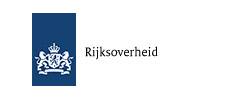Germ fighter works as endocrine disrupter
Triclosan, popular in soaps and lotions, perturbs the thyroid system of frogs and humans
30.10.2006 |Helen Lynn
Source.
Triclosan, widely used in soaps and toothpastes for its ability to kill bacteria, has been found to hasten the transformation of tadpoles into adult frogs. The new research, published online September 29 in Aquatic Toxicology, is the first to show that triclosan can act as an endocrine disrupter at concentrations found in North American streams.
Although sewage treatment plants remove most of the triclosan washed down the drain, the chemical makes its way into U.S. streams at readily detectable levels. More than 55% of streams examined in 2002 had a median concentration of 0.14 parts per billion (ppb) (Environ. Sci. Technol. 2002, 36, 2322–2329).
Caren Helbing
Bullfrog tadpoles (left) rely on precise amounts of thyroid hormone at the right time to transform fins into legs, but the popular germ-fighter triclosan throws off that signaling.
Previous studies have shown that triclosan, which has a similar chemical structure to polybrominated diphenyl ethers and PCBs, bioaccumulates in fish and is present in human breast milk, according to Caren Helbing, who is a molecular biologist at the University of Victoria (Canada) and a coauthor of the study. Intrigued by triclosan’s structural similarity to thyroid hormones, which orchestrate growth and development in wildlife and humans, Helbing and her colleagues set out to determine whether triclosan could interfere with thyroid-hormone activity in frogs.
When the team exposed young bullfrog tadpoleswhich do not yet produce thyroid hormonesto triclosan alone, they did not observe any significant changes. However, when the tadpoles were exposed to triclosan and thyroid hormones together, the scientists documented a mosaic of impacts.
The triclosan effects included significant weight loss and accelerated hind-limb development. Helbing and co-workers also detected elevated activity in the brain of genes linked with uncontrolled cell growth, and decreased gene activity in the tail fin. The data suggest that triclosan, at concentrations as low as 0.15 ppb, is capable of perturbing a fundamental hormone signaling mechanism that is nearly identical in frogs and humans, she says.
“This experimental design is very clever because [Helbing] looked at both the presence and absence of thyroid hormone,” says Tom Zoeller, an endocrinologist at the University of Massachusetts, Amherst. If Helbing had merely exposed the tadpoles to triclosan alone, she would have missed adverse effects on the thyroid system, he says. But because she added thyroid hormone along with triclosan, she could see that the triclosan made the thyroid hormone much more potent than it would have been under normal circumstances.
These results hint that triclosan does not mimic thyroid hormones but instead speeds up their impact, says Cathy Propper, an endocrinologist at Northern Arizona University. Although the mechanism is unknown, triclosan may be making protein receptors in the cell more sensitive to thyroid hormones, Zoeller speculates. Because thyroid-hormone signaling is essential for the development of the human brain and body, the new study raises red flags for human health, Zoeller says.
Current screening programs for endocrine disrupters, such as the protocols being considered by the U.S. EPA, might miss the effects observed by Helbing and her team, Zoeller says. Tests of contaminants might not be conducted in the presence of natural hormones, or animals might be tested at a stage of life when the targeted responses aren’t sensitive to thyroid hormones, he says. Triclosan producers declined to comment on this study for this story.
“The insidiousness of these compounds in the environment is that they don’t necessarily have a direct impact but can be inappropriately sensitizing or desensitizing animals to their own endocrine environment,” Propper says. The question to ask, she continues, is: “Do the antimicrobial gains you get from using triclosan outweigh both the risks to wildlife and the potential human health risks associated with it?” JANET PELLEY

































